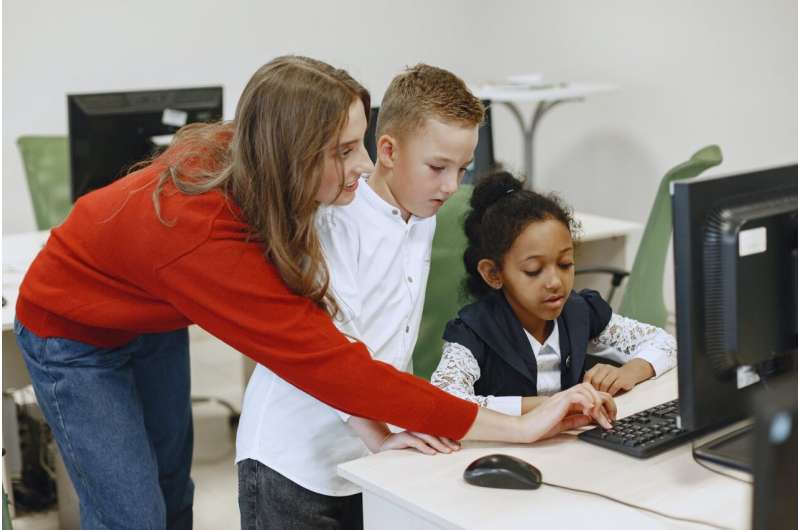This article has been reviewed according to Science X's editorial process and policies. Editors have highlighted the following attributes while ensuring the content's credibility:
fact-checked
trusted source
written by researcher(s)
proofread
AI can help, and hurt, student creativity

Teachers across the country are grappling with whether to view AI tools like ChatGPT as friend or foe in the classroom. My research shows that the answer isn't always simple. It can be both.
Teaching students to be creative thinkers rather than rely on AI for answers is the key to answering this question. That's what my team and I found in our study on whether AI affects student creativity, published in the Journal of Creativity and representing scholars from the University of South Carolina, the University of California, Berkeley and Emerson College.
In the study, we asked college students to brainstorm—without technology—all the ways a paper clip can be used. A month later, we asked them to do the same, but using ChatGPT. We found that AI can be a useful brainstorming tool, quickly generating ideas that can spark creative exploration. But there are also potential negative effects on students' creative thinking skills and self-confidence. While students reported that it was helpful to "have another brain," they also felt that using AI was "the easy way out" and didn't allow them to think on their own.
The results call for a thoughtful approach to using AI in classrooms and striking a balance that nurtures creativity while utilizing AI's capabilities.
Why it matters
Increasingly, students are using AI for help with their schoolwork. Whether it's for drafting essays, learning new languages or studying history and science, AI tools are becoming a staple in students' academic toolkit.
Students tend to view AI as having a positive impact on their creativity. In our study, 100% of participants found AI helpful for brainstorming. Only 16% of students preferred to brainstorm without AI.
The good news is that the students in our study generated more diverse and detailed ideas when using AI. They found that AI was useful for kick-starting brainstorming sessions. Other research has shown that AI can also serve as a nonjudgmental partner for brainstorming, which can prompt a free stream of ideas they might normally withhold in a group setting.
The downside of brainstorming with AI was that some students voiced concerns about overreliance on the technology, fearing it might undermine their own thoughts and, consequently, confidence in their creative abilities. Some students reported a "fixation of the mind," meaning that once they saw the AI's ideas, they had a hard time coming up with their own.
Some students also questioned the originality of ideas generated by AI. Our research supported these hunches. We noted that while using ChatGPT improved students' creative output individually, the AI ideas tended to be repetitive overall. This is likely due to generative AI recycling existing content rather than creating original thought.
The study results indicate that allowing students to practice creativity independently first will strengthen their belief in themselves and their abilities. Once they accomplish this, AI can be useful in furthering their learning, much like teaching long division to students before introducing a calculator.
What still isn't known
Our study primarily explored AI's application in the idea-generation phase of creativity, but we also emphasized the importance of developing skills at the start and end of the creative process. The essential tasks of defining problems and critically evaluating ideas still rely heavily on human input.
The creative process typically involves three phases, such as problem identification, idea generation and evaluation. AI shows promise in aiding students in the idea generation phase of the creative process, according to our study. However, the current generation of AI, such as ChatGPT-3, lacks the capacity for defining the problem and refining ideas into something actionable.
AI's growing role in education brings many advantages, but keeping the human element at the forefront is crucial.
What's next
Content ownership, plagiarism and false or misleading information are among the current challenges for implementing AI in education. As generative AI gains popularity, schools are pressed to set guidelines to ensure these tools are used responsibly. Some states, such as California and Oregon, have already developed guidelines for AI in education. Ethical considerations are vital for a positive relationship between creativity and AI.
Our team will continue to research the effect of AI on creativity, exploring its impact on agency, confidence and other phases of the creative process. AI in education is not just about the latest technology. It's about shaping a future where human creativity and technological advancement progress hand in hand.
Provided by The Conversation
This article is republished from The Conversation under a Creative Commons license. Read the original article.![]()





















